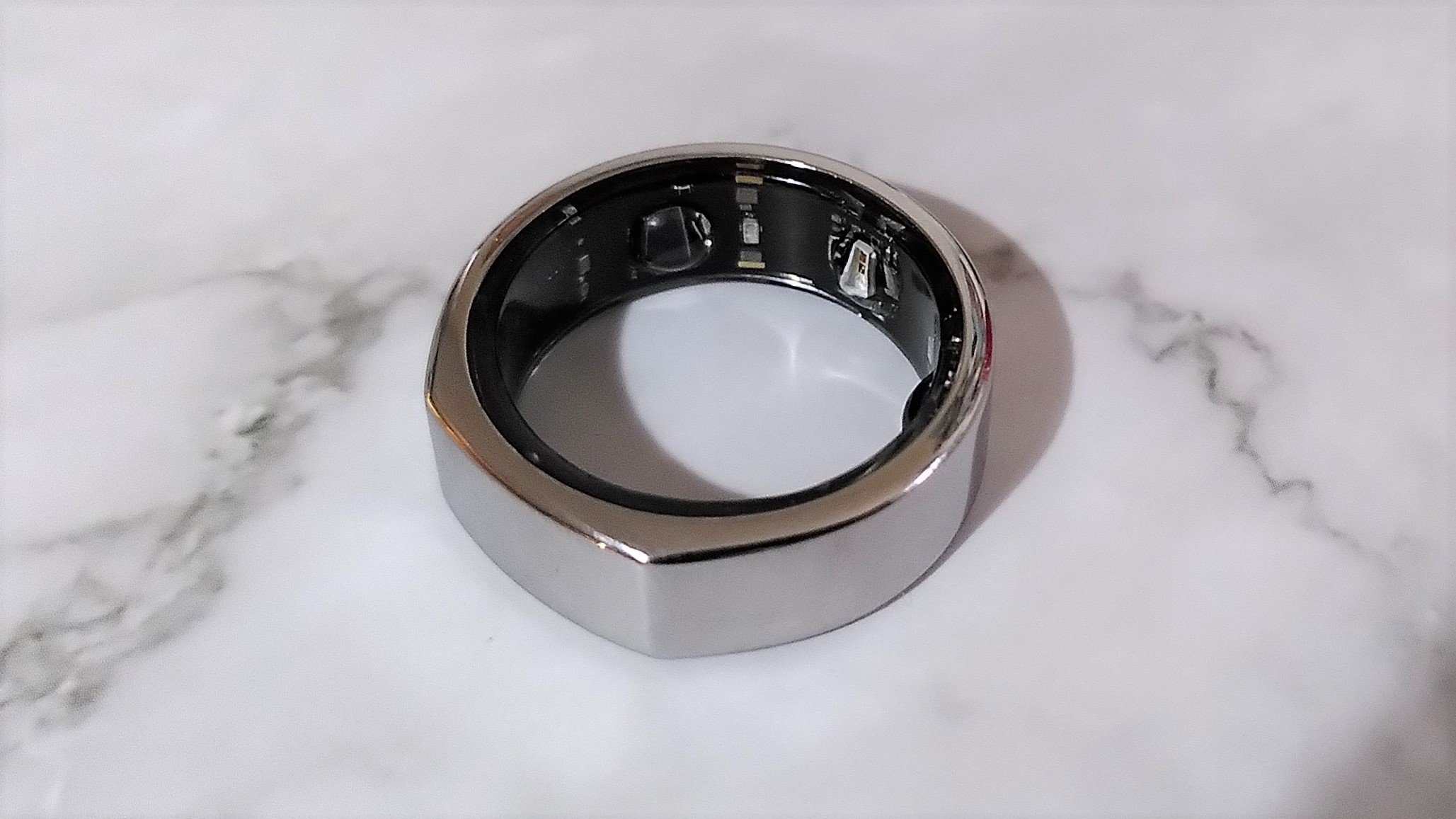TechRadar Verdict
The third-generation Oura ring makes several big improvements on its predecessor, with an upgraded heart rate sensor, seven temperature sensors, and a new SpO2 sensor all contributing to a bigger, more accurate picture of your overall wellbeing. The main downside of the new ring is that several of its features weren't yet fully finished at the time of release. The new subscription model may put some potential users off as well, but if Oura can develop a rich enough collection of extra tools for members then it may prove a good alternative to services like Apple Fitness Plus or Fitbit Premium in the future.
Pros
- +
Accurate 24/7 heart rate tracking
- +
Impressive sleep monitoring
- +
Stats clearly presented
- +
Excellent mindfulness sessions
Cons
- -
More expensive than a smartwatch
- -
Some features not yet available
Why you can trust TechRadar
Editor's Note
• Original review date: December 2021
• New Oura Ring 4 released in 2024
• Launch price: $299/£349/AU$420
• Official price now: $299/£349/AU$420
Update: November 2024. The Oura Ring 4 was unveiled earlier this year, supplanting the Oura Ring 3 as the newest model in the lineup. The new model still requires Oura's monthly subscription, and the design has improved to make it more comfortable. There are also improvements to the heart rate, blood oxygen, and skin temperature monitoring.
The Oura Ring 3 is definitely a bit long in the tooth in 2024, now three years old. However, if you can find one at a good discount, it might make a decent alternative to the Oura Ring 4 if you don't want to splash all that cash, or you just want to give a discrete wearable a try. The advent of the 4 has given us our first real discounts on the 3 during major sales events, with up to 22% off some colors and sizes.

Two-minute review
The third-generation Oura ring might look like its predecessor, but inside there are some big upgrades that make it even better at tracking – and improving – your daily habits.
First, a little background: Oura is a smart ring, an emerging category but one Oura is top of. For now, at least. It's lined with sensors, which measure biometric data 24 hours a day, and uses it to help you strike the right balance of rest and activity. The fact that it’s a ring means you have to rely on its well-designed smartphone app when you want to check your stats, but also means that heart rate data is more accurate, as the blood vessels in your fingers are much closer to the surface than those in your wrist.
The latest Oura, released back in 2021, has a brand new optical heart rate sensor that now tracks data 24 hours a day meaning you can spot-check your pulse any time, and easily review changes over time. It also means the app has much more data to draw on when assessing your activity and recovery habits, making its guidance much more accurate and useful. It's our top choice for best sleep tracker, at least while we wait to see if the forthcoming Samsung Galaxy Ring can knock it off its perch, or perhaps an unannounced Oura Ring 4.
There’s a new SpO2 sensor, as well, which also benefits from being on your finger rather than your wrist, plus seven temperature sensors to track changes in skin temperature.
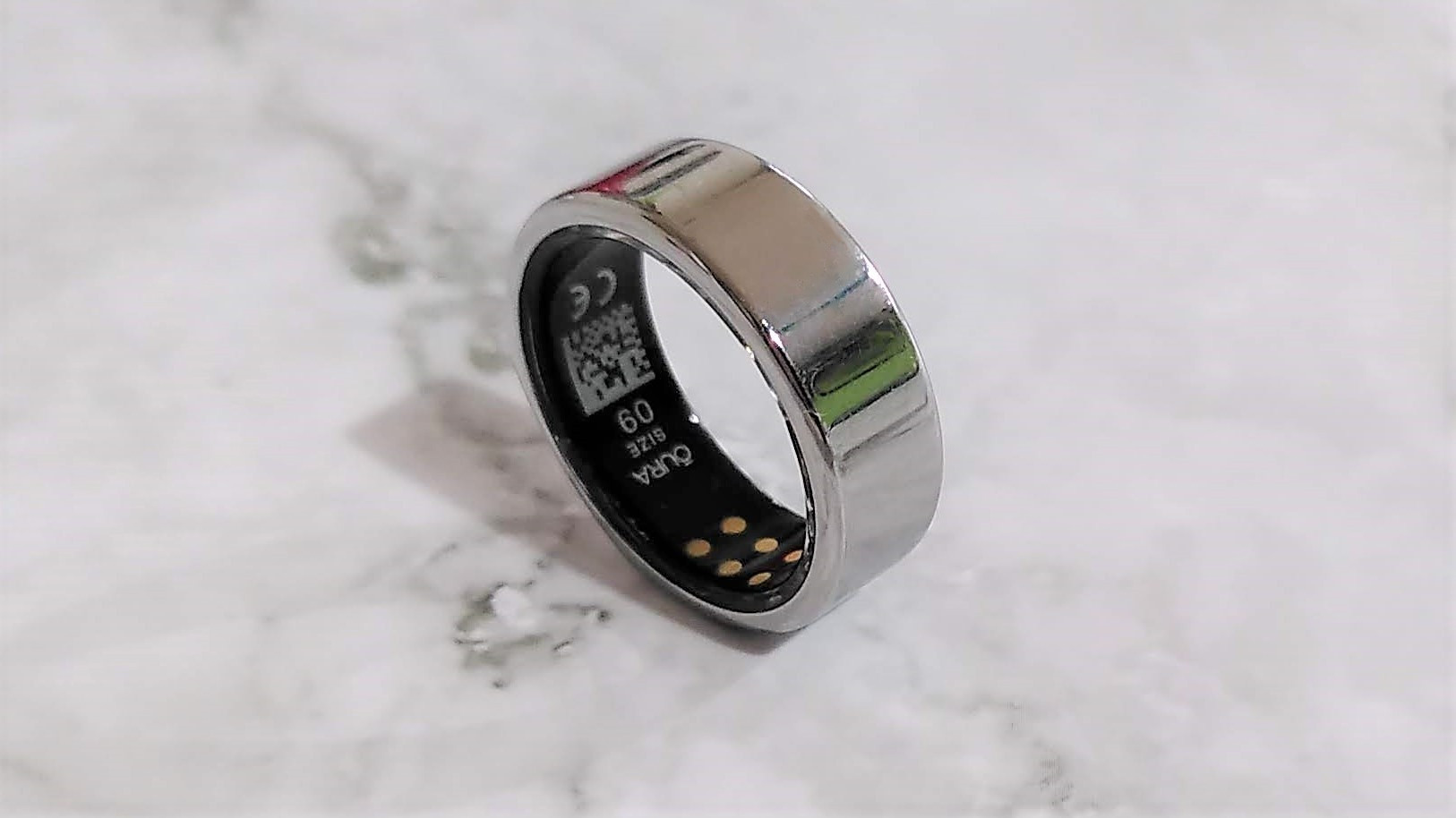
The Oura app collects and analyzes all this data, but never gives you figures without context. No matter how far you drill down through the graphs and charts, there’s always a detailed explanation of how it was calculated, what it means, and what action you can take to improve your rest/activity balance. Your heart rate variability is lower than usual, which means you may be stressed – perhaps consider a relaxation session. You got to bed on time, but had less REM sleep than you should – consider cutting back on the caffeine.
Along with the latest ring, Oura has also introduced a subscription plan, which will give you access to extra tools and insights for a monthly fee. The ring comes with a six-month trial, and existing Oura users who decide to upgrade will get free lifetime membership.
Before you place your order though, you should know that some of the ring’s most interesting features have yet to launch. Automatic workout tracking, for example, isn’t yet available to Android users, and the ability to track your heart rate during exercise is scheduled to arrive in early 2022. Most of Oura’s member-only features are still in development too.
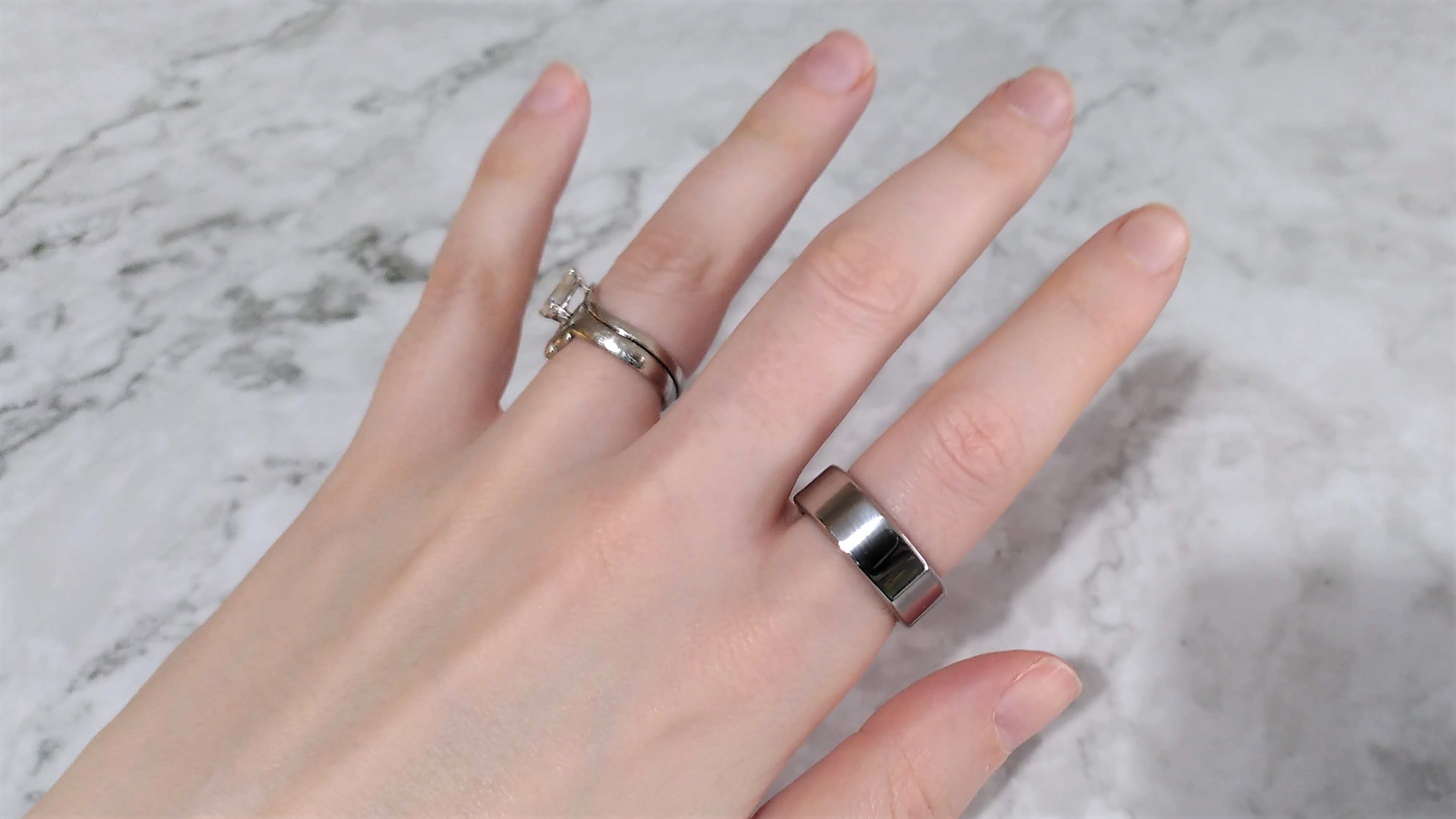
Price and release date
- Released November 2021
- Same price as second-gen Oura ring
- Optional membership subscription
The third-generation Oura was released on November 16 2021, and costs $299 (about £230 / AU$420). That’s the same as the starting price of the second-generation ring, but this time there’s no premium diamond-set version available. The ring can only be bought direct from Oura, but worldwide shipping is available.
The price of the ring includes a six-month Oura membership. Once that expires, you’ll need to pay $5.99 (about £4.50 / AU$8) per month to maintain your subscription if you want to keep access to premium features. If you’re upgrading from a second-gen Oura ring, you’ll get lifetime membership for free.
For comparison, Apple Fitness Plus costs $9.99 / £9.99 / AU$14.99 per month, and Fitbit Premium is $9.99 / £7.99 / AU$15.49. These both offer a lot more features than Oura’s membership plan, but they’re also much more established; the Oura subscription service has only just launched, and should receive lots of extra tools over the coming months and years.
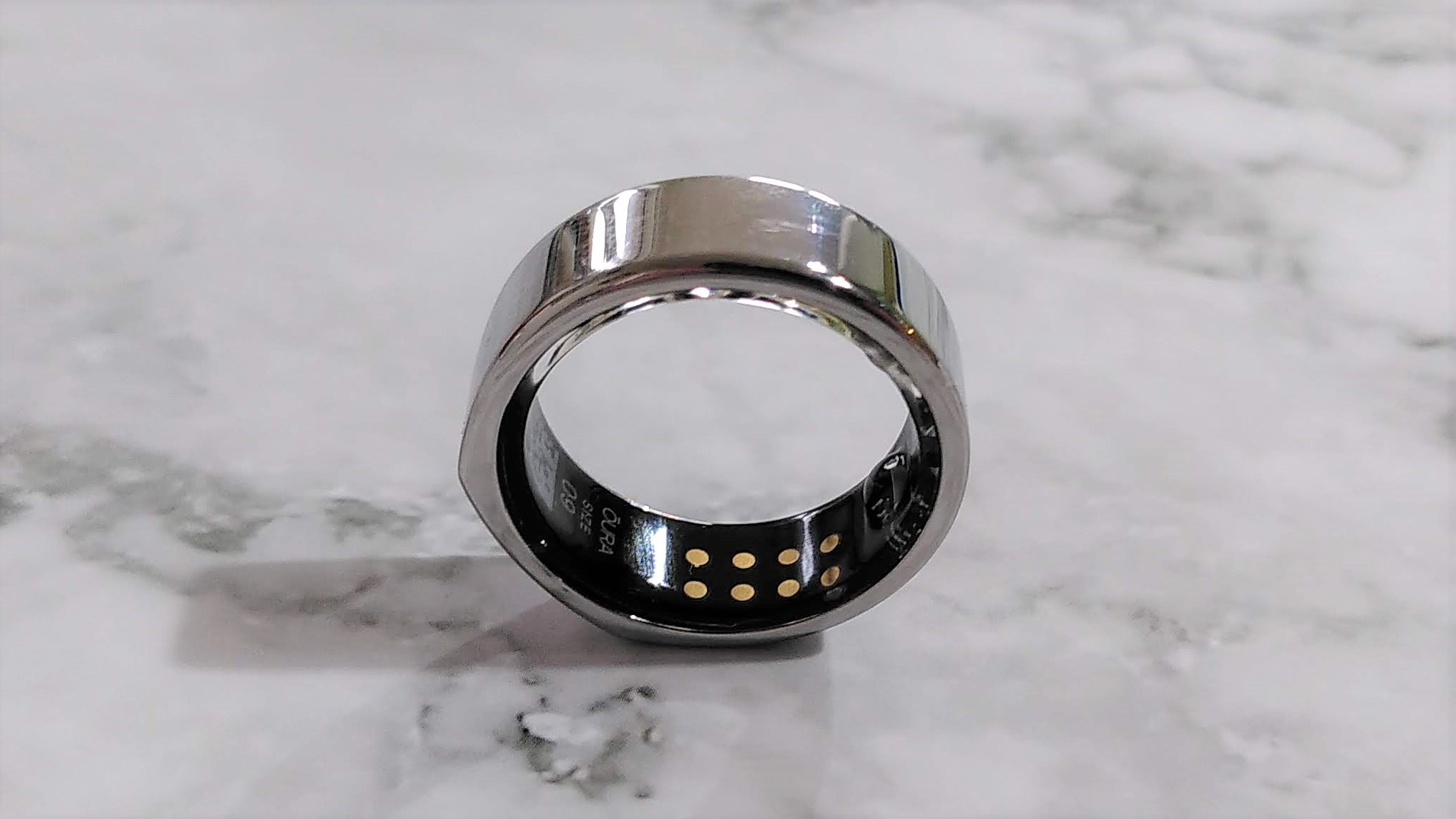
Design
- Clean, simple look
- Choice of four finishes
- Updated shape
From the outside, the Oura looks like a simple metal band, but look closer and you’ll see that it’s lined with sensors that sit against your finger.
Before you order your ring, Oura will send you a set of plastic blanks so you can find the best size for your hand, and get used to how it’ll feel to wear the device during everyday activities. Oura advised us that, unlike the second-gen model, the sensors in the new ring works best when worn on a finger rather than your thumb. Thankfully, it’s smooth and comfortable, which is important for a device that you’ll be wearing all day and all night.
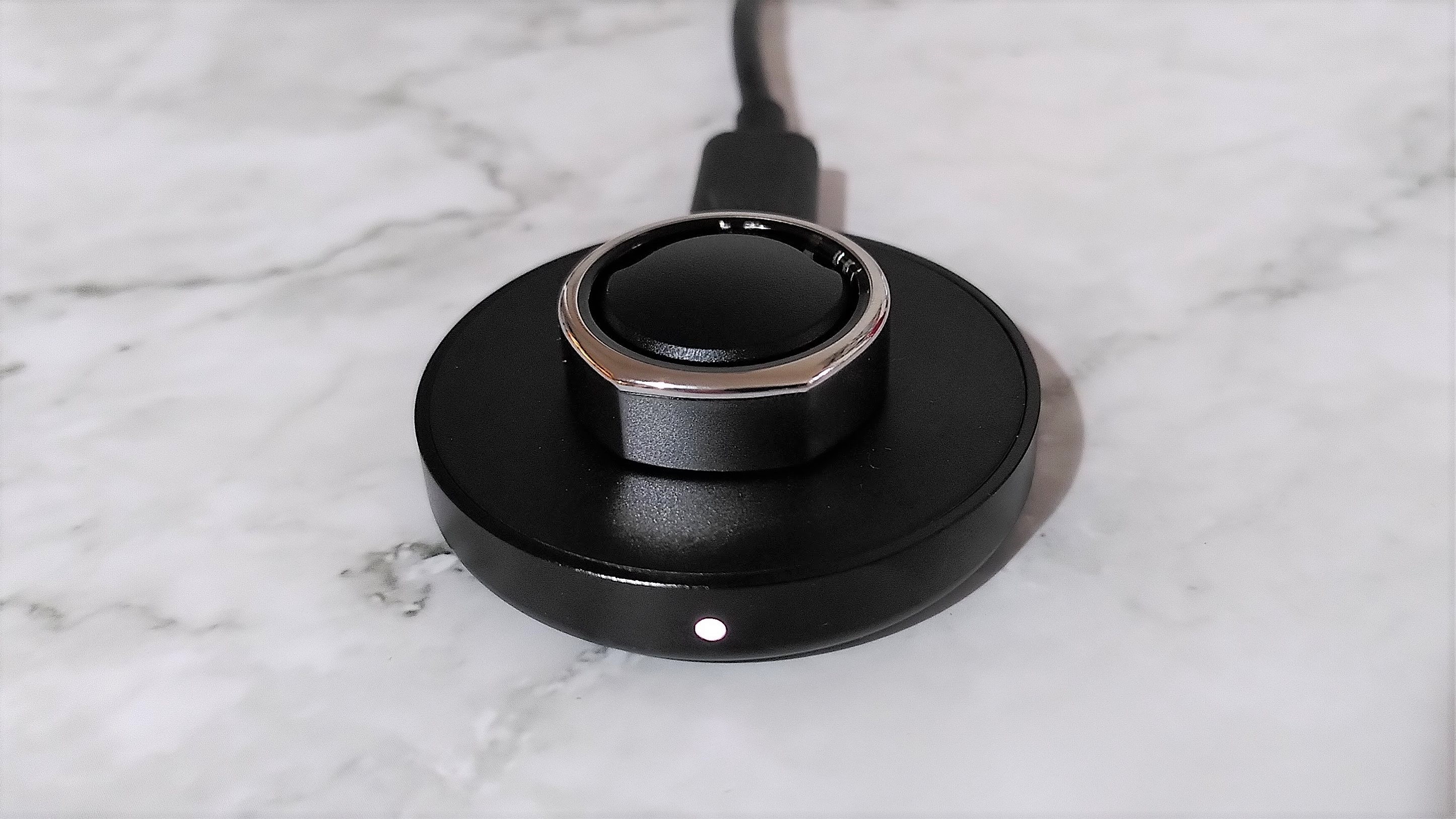
It comes in four colors (metallic silver, black, or gold, and a matt black finish called ‘stealth’), and is completely plain except for a small flat section that sits on top of your finger, and is reminiscent of a signet ring. This is a new feature for the third-gen ring, and gives its designers a tiny bit of extra space for its internal components. It’s no heavier than its predecessor though, and still weighs between four and six grams.
Its charger is a simple black plastic stand that connects to a USB cable, with a white LED that illuminates when the ring is connected.
Features
- Upgraded heart rate sensor
- Seven temperature sensors
- New SpO2 sensor
One of the biggest benefits of a smart ring over a watch is that the blood vessels in your fingers are closer to the skin than those in your wrist, which should result in more accurate heart rate measurements. It therefore makes sense that the biggest upgrade to the Oura 3 is a new optical heart rate sensor, which now measures your pulse 24 hours a day.
The second-gen Oura excelled at tracking your wellbeing while you sleep, but constantly measuring your heart rate during waking hours as well means that there’s much more data for the app to draw upon in order to assess your activity, wellbeing, and recovery.
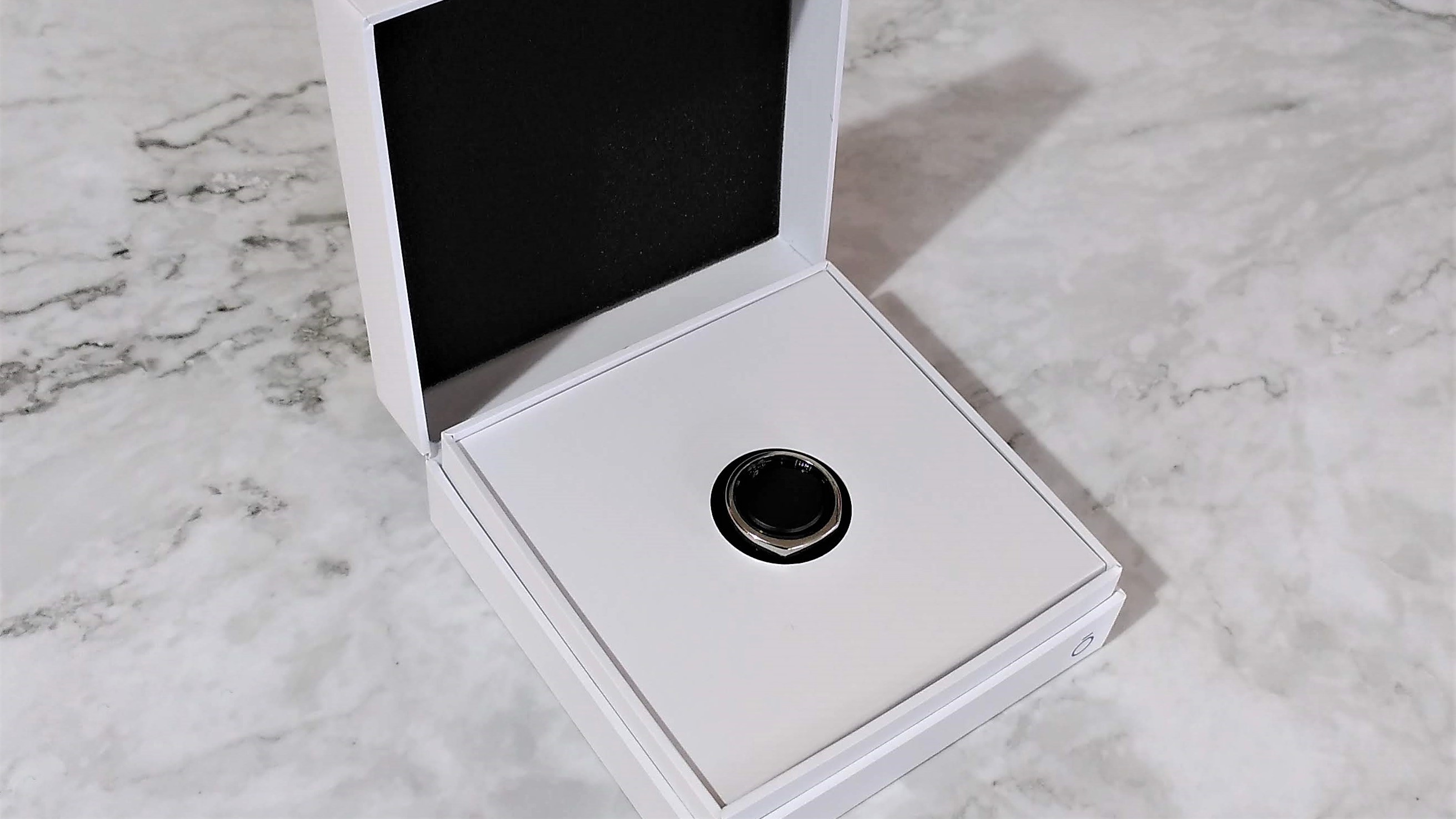
The new ring also has seven skin temperature sensors, which allow it to measure changes in your baseline temperature that could be caused by exercise, stress, or your menstrual cycle to predict your period more accurately than a simple calendar. Period prediction is currently in beta for iOS users, and should be rolling out for Android in the near future.
The final addition to the ring is an SpO2 sensor, which tracks blood oxygen saturation throughout the night. Like the heart rate sensor, this benefits from being against your finger due to the closer proximity of blood vessels to the skin’s surface, so its readings should be more accurate than those from a watch.
Performance
- Long-term use gives more accurate results
- Data clearly presented and explained
- Workout tracking is a work in progress
First of all, it’s important to note that you’ll need to use the Oura ring for at least a couple of weeks in order to establish baseline habits – and the longer you use it, the more accurate and useful its reports will be.
Like its predecessors, the third-gen Oura is designed to help you strike the right balance of activity and rest, keeping moving enough to maintain and improve your fitness, while getting enough sleep and quiet time to recharge for the next day.
The ring connects to the Oura smartphone app (available for Android and iOS), and your biometric data is synced automatically throughout the day. All your stats are presented clearly in a nicely designed dashboard, and you can browse through more in-depth analysis by tapping on three categories: readiness, sleep, and activity.

Each day, you’ll be given a readiness score based on how well you’ve managed to balance activity and rest, and how much energy you have for the day ahead. This is a feature that Fitbit has recently added to its own app, though only for Fitbit Premiums subscribers, and Oura’s score takes more metrics into account.
Like most fitness trackers and smartwatches, Oura also gives you a sleep score when you wake (presented as a percentage and a semicircular chart so you can quickly check it at a glance first thing). This takes into account not just how long you spent asleep, and in which sleep stages (light, deep, and REM), but also factors including your heart rate and bedtime schedule.
Finally, the dashboard will present you with an activity goal, which you should aim to complete before the end of the day. You’ll be told how many calories you should aim to burn through activity based on your age, gender and daily readiness, and the app will estiamte roughly how long you should spend walking to achieve this. More intense activities like running or cycling will fill the activity progress bar faster.
Over the first few days and weeks, Oura will build up a picture of your activity and sleeping habits, plus baselines for your temperature and heart rate. The app can then identify and interpret any deviations from these norms.
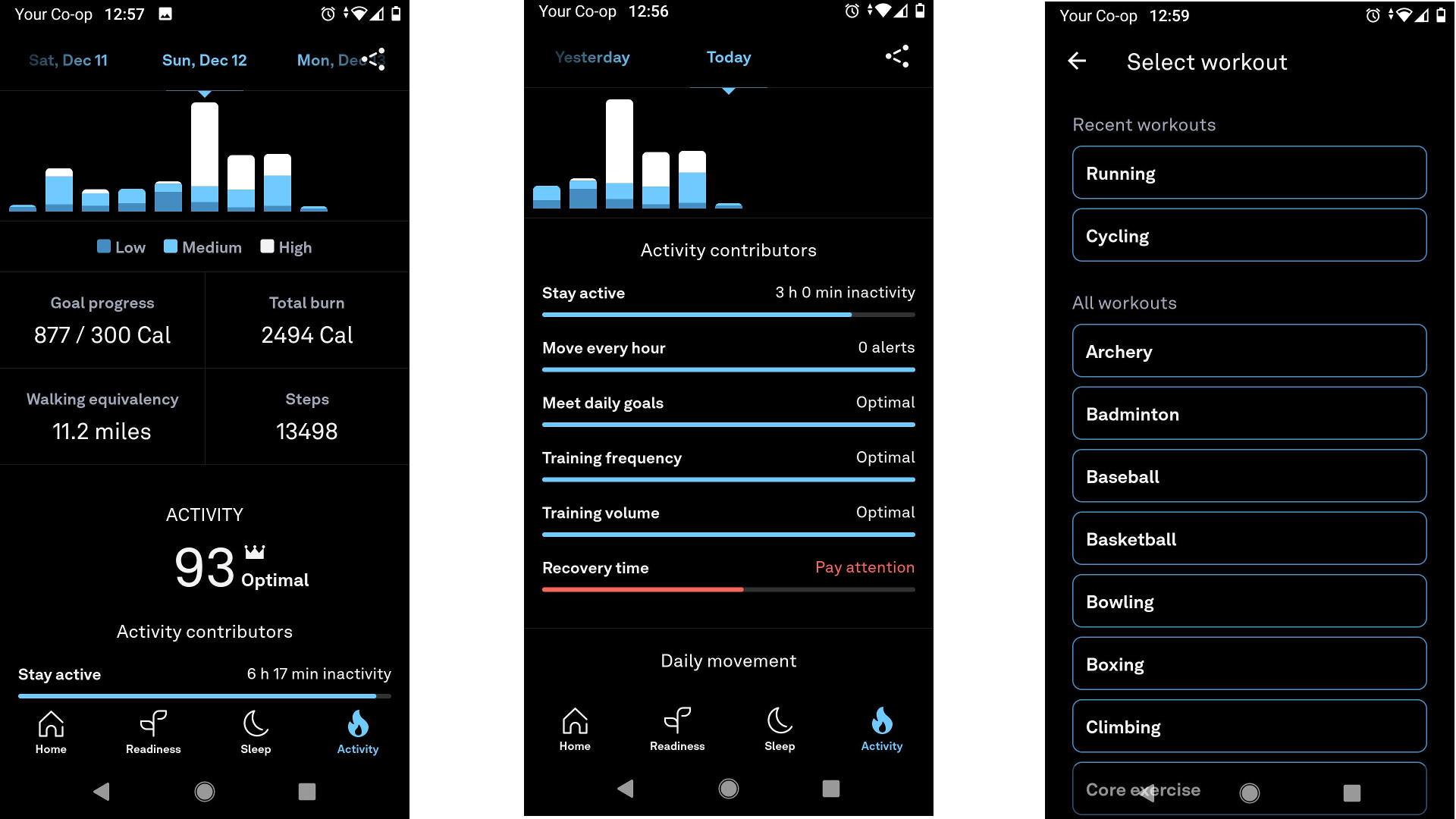
Rather than simply presenting this as raw data, the Oura app processes it in various interesting ways that help you understand your daily habits. For example, delving into your heart rate data will allow you to see something called ‘restorative time’ – periods during the day when both your body and mind are recharging. This is calculated using not just your heart rate, but also the temperature of your hands; if your hands are relatively warm and your heart rate is low, it’s likely that you’re taking some time to relax.
In our tests, we were particularly impressed by the ring’s ability to differentiate between time spent in bed and time spent actually asleep; something many dedicated sleep trackers struggle with. We also appreciated its ability to detect naps. Many fitness trackers fail to tell the difference between a few minutes of rest during the day and a full night’s sleep, and award you a low score if you take a quick siesta in the afternoon. Oura identifies naps, prompts you to confirm them in the app, and integrates them into its analysis of your sleeping patterns. Naps will also be factored into your daily readiness score – and if you’re not sleeping well at night, you may be encouraged to avoid them later in the day.
We found that activity detection seemed to be the Oura ring’s weakest point. The new all-day heart rate tracking appeared to accurately reflect changes in exercise intensity, but we would sometimes receive notifications that we’d achieved our daily activity goal while doing something like cooking, or even brushing our hair.
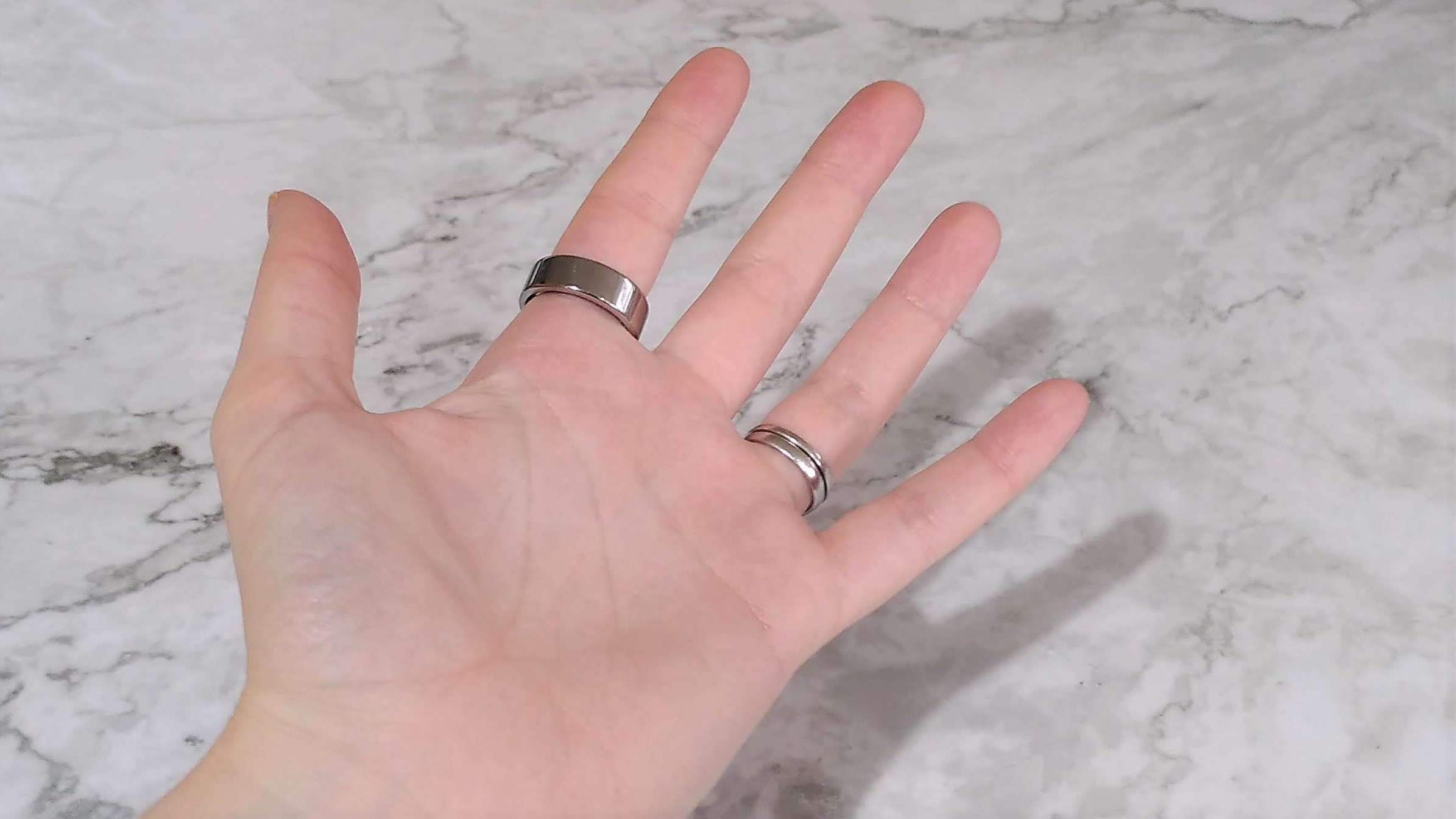
Oura rolled out automatic workout detection for iOS users in February 2021, but this feature doesn’t yet seem to have reached Android. The app will detect if you’ve completed some intense activity, and will count it towards your daily goal, but if you want to get specific you’ll need to enter the workout details yourself. To do that, tap the plus icon on the main dashboard and enter the time you began, the type of activity, and the duration. The app will then calculate the calorie burn and factor the exercise into your daily metrics.
Hopefully automatic workout detection will arrive on Android before long – and it should be quite refined when it does. Each time the iOS app identifies a workout, it will prompt the user to report back on whether or not it was accurate, helping to fine-tune the algorithm.
In early 2022, Oura is also planning to introduce a feature that will allow you to track your heart rate during workouts, and get insights into your exercise after you’ve finished. We’ve few details at the time of writing, but a preview of the tool shows a map of a running route, so the tool will presumably use your phone’s GPS chip to track your location.
Member benefits
- Sleep sounds available in the app
- Lots more content on the way
The Oura app received a major upgrade to coincide with the launch of the third-generation ring, and now contains several extra tools for paid-up members. Right now these are mostly sleep and relaxation aids, but the company promises that subscribers can look forward to “an ever-growing suite of features, insights, personalized recommendations, guided audio sessions, science-based educational content, and more.”
In short, it sounds very much like a new competitor to the likes of Fitbit Premium, Apple Fitness Plus, and the recently launched Amazon Halo Fitness service.
To get a taste of things to come, tap the menu button at the top left of the Oura app, and you’ll see a list of additional options including ‘Sleep sounds’. These are guided meditation sessions and relaxing stories to help you wind down before bed, or whenever you want to chill out. The selection is quite small at the time of writing, with three meditations and three stories, but each one is very nicely presented, and can be accompanied by a soothing background sound like white noise, waves, or rainfall. It’s a strong start, and we’re looking forward to seeing what else Oura adds over the coming months for subscribers.
First reviewed December 2021
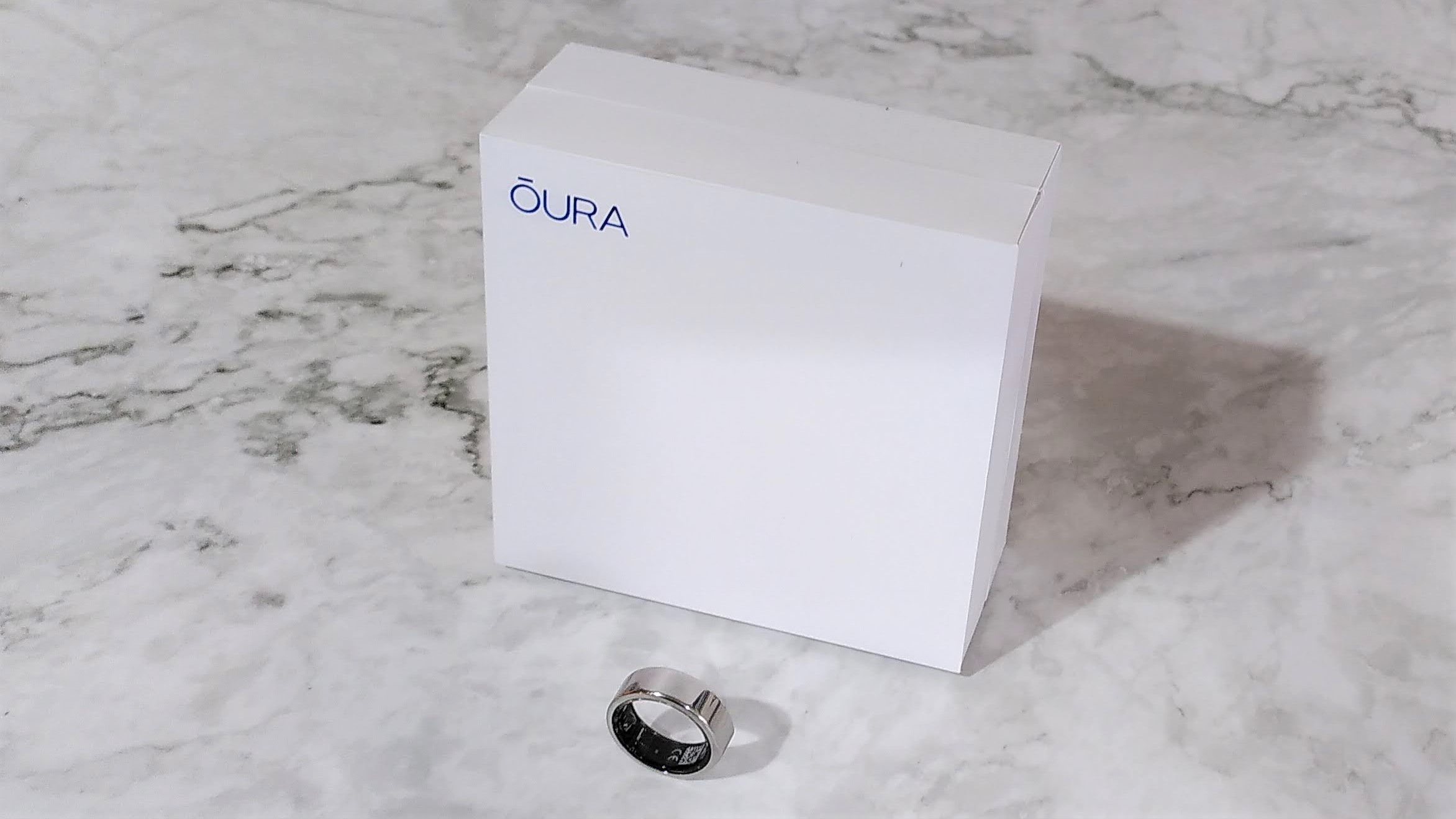
Buy it if
You struggle to maintain energy levels
If you regularly find yourself flagging during the day, or lying awake staring at the ceiling at night, the Oura smart ring can give you valuable insights into your lifestyle that will help you achieve a better balance. It doesn’t necessarily involve making sweeping changes; small things can add up, and the app will give you personalized guidance along the way.
You want to sleep better
Oura really shines at night, and the third-gen ring has an improved sleep staging algorithm to more accurately detect periods of light, deep and REM sleep – plus times when you’re awake. It’s one of the most accurate sleep trackers we’ve tested, and the app tracks your sleep routines to help you understand and improve your habits.
Don't buy it if
You want to track runs
Proper workout tracking is on the cards, and looks like it’s likely to give the same kind of accuracy as a non-GPS fitness tracker, but if you want something that’ll really help you improve your times then you’ll be better served with a proper running watch – which will also have the advantage of letting you check your time, pace, and splits without digging your phone out of your pocket.
You don’t want another subscription
Oura membership isn’t mandatory, and as it develops, you might find that it can replace your existing Fitbit Premium or Apple Fitness Plus subscription. It’s very much a work in progress though, and after your six-month trial period is over, you’ll have to decide whether to sign up for the monthly payments or skip the more interesting features available to members.

Cat is TechRadar's Homes Editor specializing in kitchen appliances and smart home technology. She's been a tech journalist for 15 years, having worked on print magazines including PC Plus and PC Format, and is a Speciality Coffee Association (SCA) certified barista. Whether you want to invest in some smart lights or pick up a new espresso machine, she's the right person to help.
